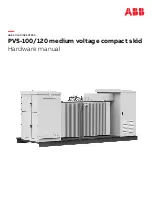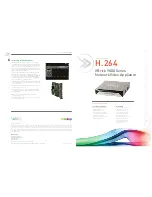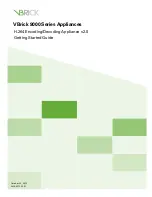
5-22 Parameter setting
IM 12B6B3-E-H
5-3-3. Calibration Functions
Code 20
∆
t.SEC &
These functions are used to determine the stability level demanded by the EXA as
∆
pH
acceptance criteria for the automatic calibration. The default settings give a good
calibration for general purpose electrode systems with a fast response. Where
heavy duty electrodes are used, or when low temperatures are concerned, these
values should be adjusted.
When adjusting these settings, the longer the time interval and the smaller the pH
change, the more stable will be the reading. However, it is important to bear in
mind that the time taken to reach stability is an exponential function, and too
ambitious a setting will cause the instrument to wait for a very long time before
accepting a calibration.
Code 21
AS.LOW & Limit values for the drift of an electrode system before an error is signalled when
AS.HI
a calibration is done. These default values should be adjusted to suit the applica-
tion, this will be especially important will enamel or Antimony probes.
Code 22
SL.LOW &
Limit values for acceptable slope (sensitivity) calibrations.
SL.HI
Code 23
ITP, SLOPE Values can be entered directly in this section. These data can be provided by the
& ASPOT
manufacturer of the probe, or by the users laboratory etc. They are determined
independently of the measuring loop.
NOTE: it is not necessary to enter this data in most cases as the EXA automati-
cally does this while performing a calibration. The feature is used in the
case of special electrode systems and where calibration in the process
environment is not possible.
Code 24,
Buffer tables The following buffer calibration tables are programmed into the EXA. They are the
25, & 26
primary buffer standards according to NIST (formerly NBS) and various other
national standards. We strongly recommend the use of these buffer solutions as
they give the best buffer capacity, reliability and accuracy when calibrating.
Table 5-1.
pH 4
pH 7
pH 9
pH 4
pH 7
pH 9
0 °C
4.00
6.98
9.46
45 °C
4.05
6.83
9.04
5 °C
4.00
6.95
9.40
50 °C
4.06
6.83
9.01
10 °C
4.00
6.92
9.33
55 °C
4.08
6.83
8.99
15 °C
4.00
6.90
9.28
60 °C
4.09
6.84
8.96
20 °C
4.00
6.88
9.23
65 °C
4.11
6.84
8.94
25 °C
4.01
6.87
9.18
70 °C
4.13
6.85
8.92
30 °C
4.02
6.85
9.14
75 °C
4.15
6.85
8.90
35 °C
4.02
6.84
9.10
80 °C
4.16
6.86
8.89
40 °C
4.04
6.84
9.07
These tables may be adjusted in the case that the user wishes to use other cali-
bration solutions. The "name" of the buffer can be changed at the *BUF.ID
prompt. The other values can then be adjusted in sequence.
Code 27
Zero Point
As an alternative to Asymmetry Potential, the Zero point can be used to define
and calibrate the EXA pH unit.
Note that this method conforms to the DIN standard for instruments
No. IEC 746-2.
Содержание PH402G
Страница 1: ...Instruction Manual Model PH402G pH Converter IM 12B6B3 E H 7th Edition YOKOGAWA...
Страница 2: ......
Страница 6: ...IM 12B6B3 E H...
Страница 26: ...IM 12B6B3 E H...
Страница 49: ...Parameter setting 5 17 IM 12B6B3 E H 5 3 Notes for guidance in the use of service coded settings...
Страница 68: ...IM 12B6B3 E H...
Страница 76: ...IM 12B6B3 E H...
Страница 82: ...IM 12B6B3 E H...
Страница 93: ...IM 12B6B3 E H...
















































